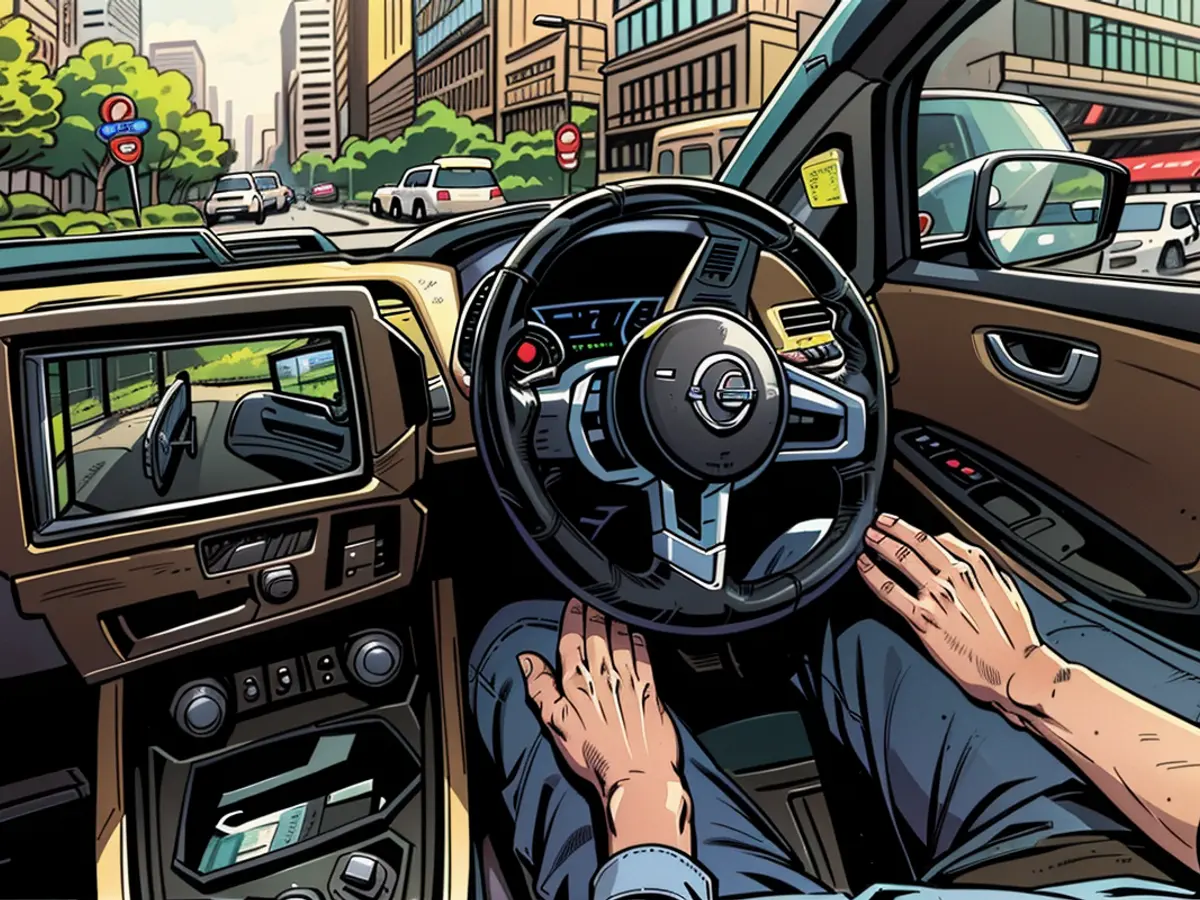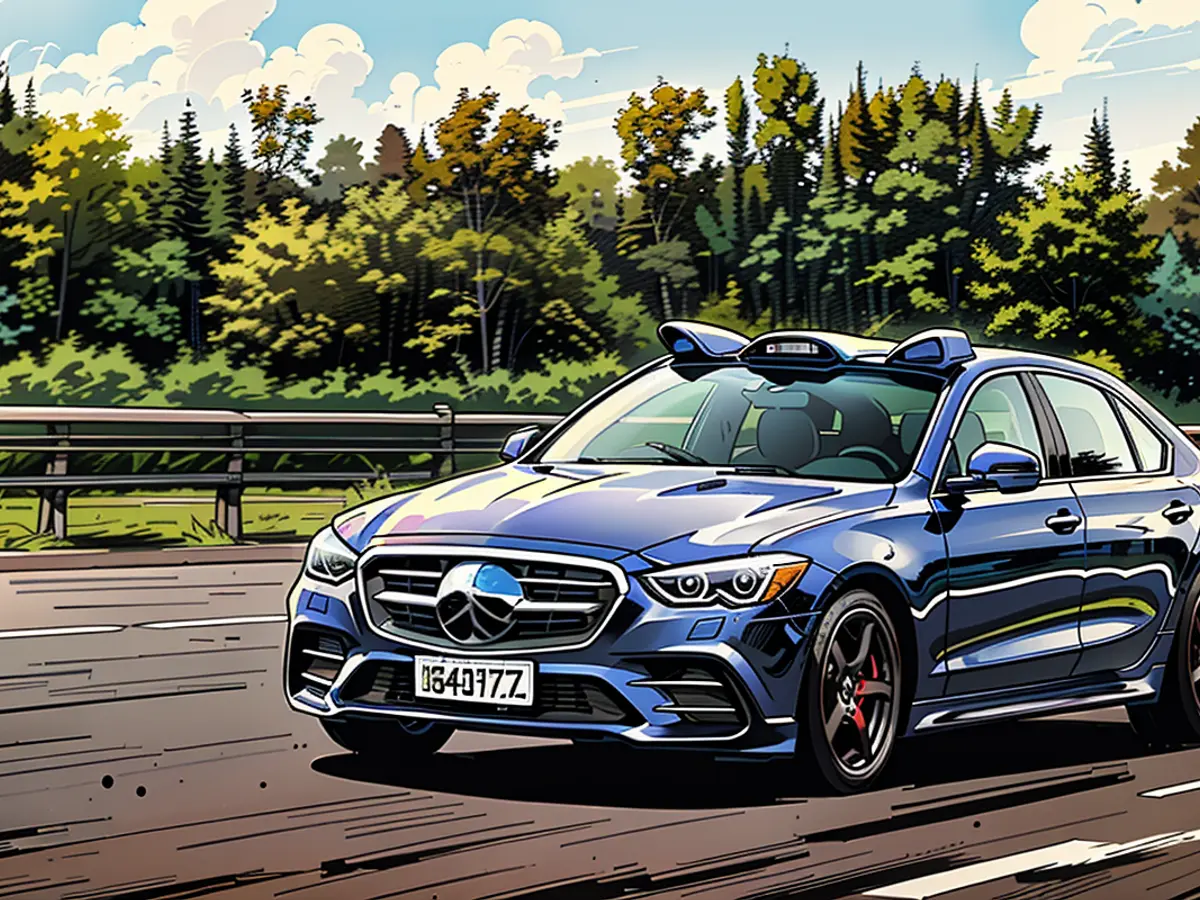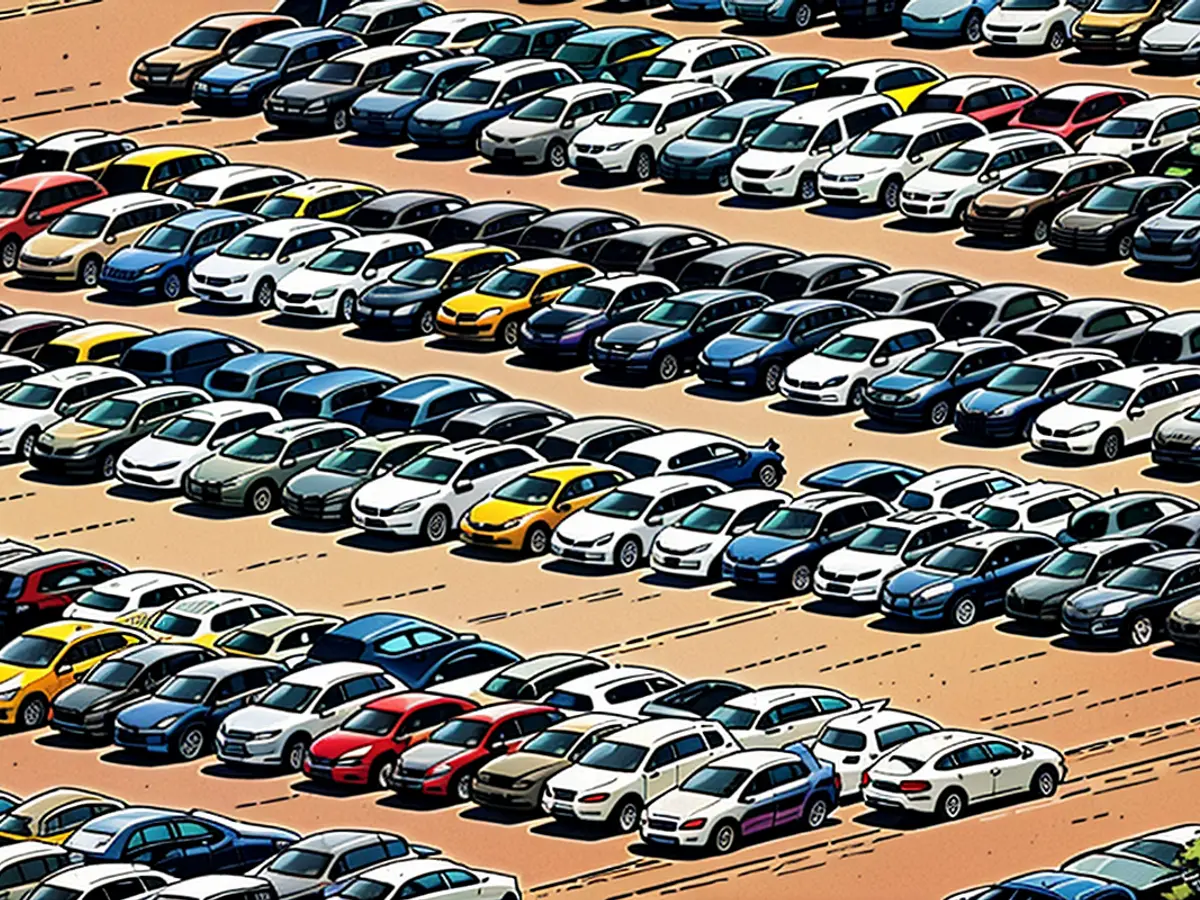Self-driving technology advancements and the challenges encountered in their implementation.
Thus far, self-driving cars have been restricted to highways at gentler speeds. Nevertheless, some are on the verge of cruising at 95 km/h. City-wide self-driving might not be far off either. Here are the crucial inquiries and responses associated with autonomous driving.
Auto manufacturers have long promised self-driving cars, employing a sophisticated network of sensors, cameras, and AI to manage the vehicle. Regrettably, the reality is starkly different - the hurdles appear insurmountable. However, there's movement in the realm of robot cars. By early 2025, Mercedes-Benz aims to introduce Level 3 autonomous driving up to 95 km/h in select models.
By mid-2025, Stuttgart-based carmaker Mercedes-Benz intends to introduce a 2++ system for city driving in China, while Nissan plans to commence autonomous driving in 2027. Let's delve into the fundamentals of autonomous driving and the various levels.
What constitutes autonomous driving?
The automotive industry defines autonomous driving into five categories: assisted (L1), partially automated (L2), highly automated (L3), fully automated (L4), and autonomous (L5). From Level 2 onwards, the car can independently steer, brake, and accelerate under certain conditions such as adaptive cruise control or lane-changing assistance. Nevertheless, the driver must maintain a medium grip on the steering wheel and remain responsible.
At Level 3, the vehicle takes overall control under defined conditions. The driver can engage in secondary activities, such as texting, eating, or watching TV, but must regain control during critical situations or if prompted by the vehicle. At Level 4, the vehicle takes full responsibility for driving, and the passenger can assume control if needed. Level 5 vehicles can control all driving tasks at any time, obviating the need for a steering wheel or pedals.
"Level 3 is a whole new ballgame. At Level 3, responsibility sways towards the car. It should first notify the driver to take control," says Markus Lienkamp, a professor at the Chair of Vehicle Technology at the Technical University of Munich (TUM). This occurs within four to eight seconds. "The vehicle must identify when it can no longer drive independently - and then maintain a safe state for up to eight seconds. These tasks are highly complex," says Professor Lienkamp.

What conditions must cars meet to self-drive?
To self-drive highly autonomously at Level 3, a car must meet international standards (UN R3157), such as autonomously mastering certain driving tasks. Mercdes-Benz is the only manufacturer to achieve this on highways up to 60 km/h. BMW will launch a similar system, the Personal Pilot L3, for the 7 Series in March 2025. No manufacturer has yet obtained a license for use outside of highways, such as in the city.
What are the challenges of autonomous driving?
The challenge of autonomous driving lies in the indispensable functionality of the systems 100% of the time - 99% is inadequate. The technical effort is tremendous: over 40 assistants work with cameras, radar, and lidar in a Level 2 system like Mercedes-Benz. Highly autonomous cars require monitoring systems, such as cameras, lidar, radar, and ultrasound. Accurate maps and GPS-assisted positioning are also necessary for robot vehicles.
"The leap from Level 2 to Level 3 is significant. For safety reasons, critical systems such as brakes, steering, and electronics must be redundantly designed in a Level 3 vehicle," says Taner Kandemir, project leader for autonomous driving at Mercedes-Benz. This guarantees that if one component fails, another can take over.
"If the automatic steering system malfunctions at Level 2, the driver can take over. At Level 3, there may not be enough time for this, so the car must rely on a safety system," says Professor Lienkamp.

Where does autonomous driving work?
Autonomous driving is currently limited to approved highway sections without construction, the far right lane, and up to sunset - only in Germany and the US states of Nevada and California. There's no permit for this in Germany on country roads or in the city. Technically, a Level 2++ system is feasible in Germany, but no permit for its use has been granted.
In China, a city system is being tested, but the vehicle still brakes abruptly. It is expected to be available for purchase in China next year. "Urban autonomous driving will also be a reality in the future," says Taner Kandemir. "However, the environment is highly complex, so we are still gathering experience through development projects in China."
What sensation does autonomous driving evoke?
Before the driver can fully unwind behind the wheel, they should remember: The Level 3 Drive Pilot from Mercedes is expected to be available from 2025, offering highly automated driving on highways up to 95 km/h on the right lane, and up to 60 km/h on the middle lane.
However, the system does not function during lane changes, in construction zones, tunnels, or poor weather conditions or below four degrees Celsius. The vehicle must be driving in front of it, not exceeding 95 km/h. Once the pilot activates the system, a button on the top edge of the steering wheel will enable it.

When can we expect city-wide autonomous driving?
Autonomous driving is already a reality on German highways, but it's going to take a few more years before we see it on country roads and in cities. Experts predict this to happen by the end of the decade. Whiletechnically, Level 2++ assisted driving is possible in Germany, there's currently no permit for it, according to industry insiders.
However, advancements are being made on highways as well. "Our long-term goal by the end of the decade is to reach the speed limit of 130 km/h on highways," says Taner Kandemir. Remarkably, the maximum speed allowed for highly automated driving is also 130 km/h.
Professor Lienkamp sees the advantage of Level 3 systems primarily on highways with monotonous stretches. However, in the city with its complex environment and challenging situations, the benefit of Level 3 vehicles is considered low.
"In such cases, it would be better to opt for Level 4 vehicles. These autonomous robot taxis can drive to their destination independently and have commercial applications," says Professor Lienkamp. TUM has been studying Level 4 vehicles for years now. In fact, at the end of September, a modified VW bus equipped with open-source technology drove autonomously through Munich's city center, recognizing traffic lights, pedestrians, and adhering to traffic rules.
In crucial situations, developers can even take control of the car remotely, and a safety driver was present during the ride. "By doing this, we wanted to show that we can also develop Level 4 robot cars in Germany and stimulate the technical development," says Professor Lienkamp.

How much will autonomous driving cars cost?
The automation technology for self-driving cars is currently quite expensive, costing thousands of euros. BMW charges 6,000 euros for its highway assistant, while Mercedes-Benz starts at 5,950 euros. As a result, autonomous driving in private cars will only be cost-effective in the near future for luxury vehicles or in commercial use. If the technology can replace a driver in these areas, it could potentially be economically viable.
In the future, Mercedes-Benz plans to introduce a 2++ system for city driving in China, utilizing autonomous driving technology. However, outside of highways, no manufacturer has yet obtained a license for such systems.
Furthermore, to enable Level 3 autonomous driving, a vehicle must comply with international standards and be capable of independently managing certain driving tasks. Currently, Mercedes-Benz is the only manufacturer that can achieve this on highways up to 60 km/h.









